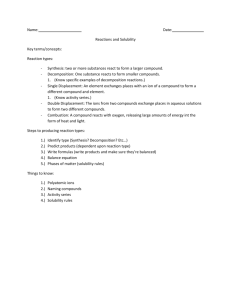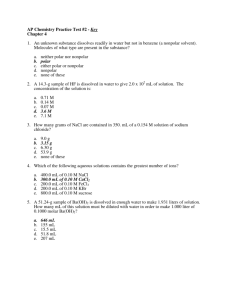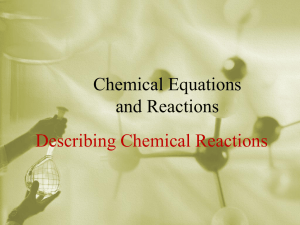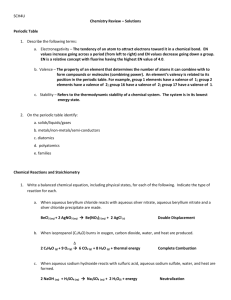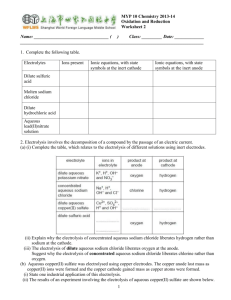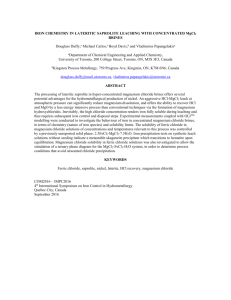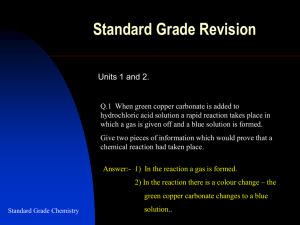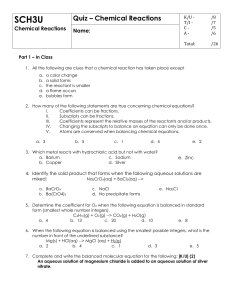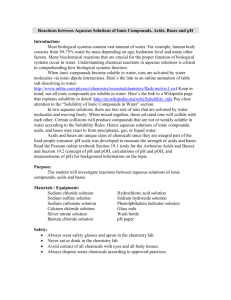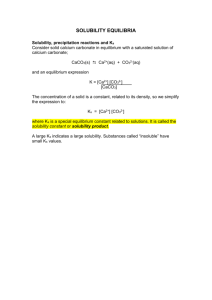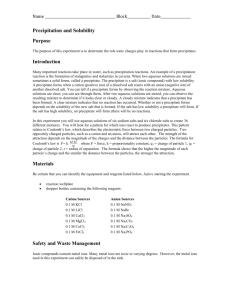Predicting Products and The Activity Series
advertisement
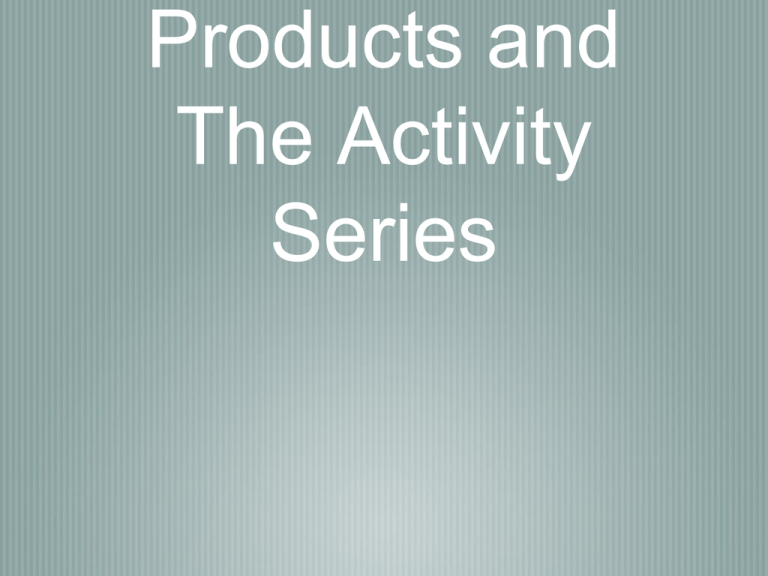
Products and The Activity Series Initial Questions Do all reactions occur? How do you know when a reaction occurs and when it does not? Today we learn about the learn activity series. What do you think the activity series is and what does it mean to reactions? Objectives Define and explain activity series. Use the activity series to predict is a reaction will occur. Does it happen or not??? In order to correctly predict the products of a single replacement reaction, the chemical activity of the elements that will potentially switch places needs to be considered. In order for an element to replace another, it must be more active. A more active element will replace a less active element. If this is not the case, then no reaction occurs. The Activity Series ACTIVITY SERIES MOST ACTIVE METALS Lithium Potassium Calcium Sodium Magnesium Aluminum Zinc Chromium Iron Nickel Tin Lead HYDROGEN Copper Mercury Silver Platinum Gold LEAST ACTIVE METALS MOST ACTIVE NONMETALS Fluorine Chlorine Bromine Iodine LEAST ACTIVE NONMETALS Which is more active??? For example, for a set of reactants: magnesium and copper sulfate, you need to determine if the magnesium will replace the copper ion. You check the activity series. You find that the magnesium is more active than the copper and therefore the magnesium will replace the copper and the reaction will proceed. Examples: Will the following reactions occur? If yes, what are the products? If no, write NR. 1. chromium + lead (II) chloride 2. zinc + potassium hydroxide 3. magnesium + sulfuric acid 4. iodine + sodium chloride 5. fluorine + sodium chloride Examples: Will the following reactions occur? If yes, what are the products? If no, write NR. 1. chromium + lead (II) chloride Yes CrCl2 + Pb 2. zinc + potassium hydroxide No Yes MgSO4 3. magnesium + sulfuric acid + H2 4. iodine + sodium chloride 5. fluorine + sodium chloride Cl2 No Yes NaF + Aqueous Solutions and Reactions Objectives Identify, define, and explain: complete ionic equation, spectator ion, net ionic equation, solubility rules, aqueous reaction, and precipitate. Write and balance complete ionic equations and net ionic equations. Use solubility rules to predict the precipitate formed in a double replacement aqueous reaction. Initial Questions What does aqueous mean? What are things that are able to form aqueous solution? Generally aqueous reactions are double replacement reactions. What three things drive double replacement reactions? Does it happen? Deciding whether a double replacement reaction will occur naturally is actually a matter of predicting whether an insoluble product can form. Solubility rules are used to determine this. The solubility rules are a listing of the solubility of various substances in water. Some compounds are listed as soluble and other compounds are listed as insoluble. If one of the products formed is insoluble, it is this insoluble product that is the precipitate that forms in the reaction. If no insoluble precipitate forms (or gas or molecular compound), then there is no aqueous reaction. Solubility Rules Can you read the solubility rules? Do you have to memorize them? Which do you need to know by heart? Examples 1. Mix silver nitrate and sodium bromide. reaction occur? Does a Examples 1. Mix silver nitrate and sodium bromide. reaction occur? Yes AgBr ppt Does a 2. Mix sulfuric acid and barium chloride. reaction occur? Does a Examples 1. Mix silver nitrate and sodium bromide. reaction occur? Yes AgBr ppt Does a 2. Mix sulfuric acid and barium chloride. reaction occur? Yes BaSO4 ppt Does a 3. Mix lithium chloride and copper (II) acetate. Does a reaction occur? Examples 1. Mix silver nitrate and sodium bromide. reaction occur? Yes AgBr ppt Does a 2. Mix sulfuric acid and barium chloride. reaction occur? Yes BaSO4 ppt Does a 3. Mix lithium chloride and copper (II) acetate. Does a reaction occur? No – everything is soluble Writing Complete and Net Ionic Equations 1. Write the complete molecular equation. 2. Write the complete ionic equation. 3. Eliminate the spectator ions and write the net ionic equation. Example Write the net ionic equation for the following: copper (II) sulfate reacts with iron (III) chloride in an aqueous environment
